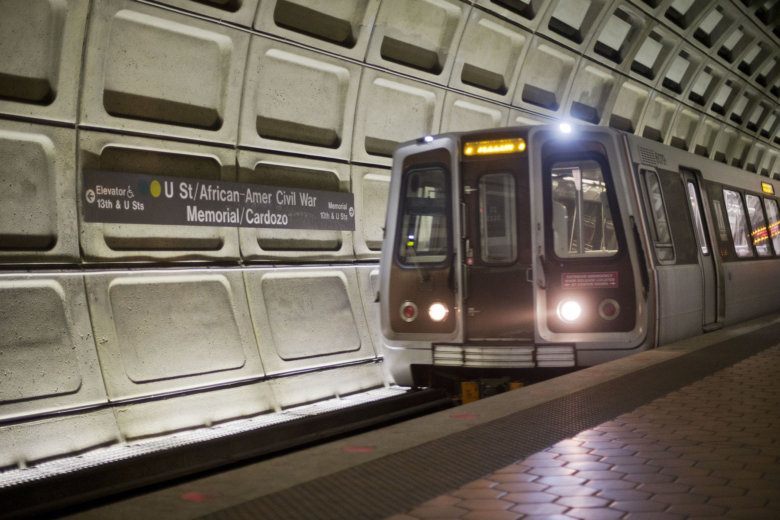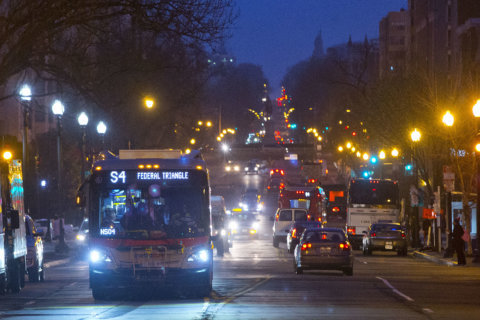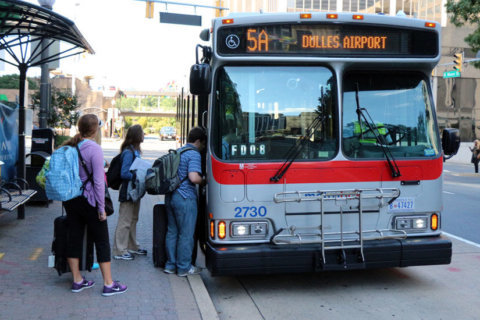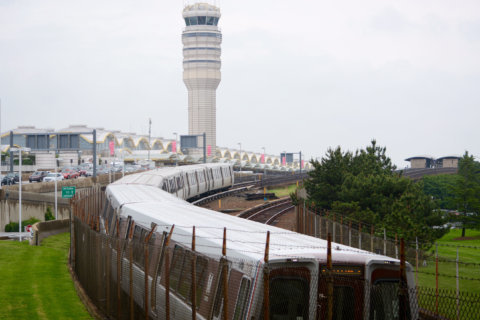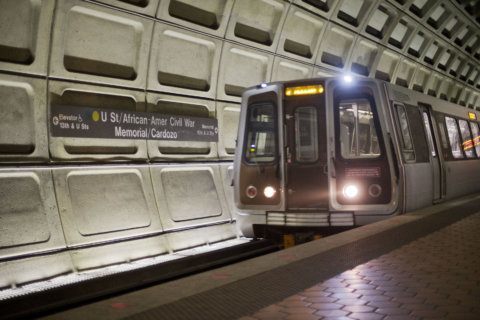
Some speed bumps for efforts toward making it easier to pay to get around using only a smartphone are driving potential division across the D.C. region.
Metro has yet to release even a preliminary version of an app — promised last year — that would allow riders to turn their phones into virtual SmarTrip cards starting this year. The agency is still working on user interface issues, according to Northern Virginia Transportation Commission staff.
“Their phase zero was scheduled for December 2018, and they’re not yet at that point yet,” said Patricia Happ, Northern Virginia Transportation Commission regional fare program manager.
Metro is still working to theoretically allow some type of mobile payment by at least the end of the year, Metro spokeswoman Sherri Ly said in an email.
“Metro is on track to meet its public commitment [and] have its infrastructure ‘mobile ready’ this year,” she said. “As we’ve said previously, each payment provider will announce the ability to use their service to pay for Metro on their own timetable.”
The big question is whether local bus systems such as Fairfax Connector should wait for Metro, or move forward either on their own, or with a separate Northern Virginia mobile fare payment system.
Maryland’s MTA has already moved on to its own app, and Northern Virginia transit systems are looking into developing their own options.
Last month, Alexandria’s DASH Bus app was used for more than 1,000 rides in its first month, after being launched in response to the Blue and Yellow Line shutdown.
“It’s exceeded expectations,” Happ said.
The app was developed by the same company that created Virginia Railway Express’s mobile ticketing app.
“There’s a lot of opportunity for coordination there for use of SmartBenefits and things like that in the future,” Happ said.
Part of the complications for Metro’s app, though, are the links between Metro’s payment systems and all of its back-end operations, such as planned new fare gates, processing systems and more.
“Metro has no excuse for being where it is in this space, but I would caution us what Alexandria’s doing with DASH is by no means what Metro is trying to do overall. They’re doing 10% of what Metro’s scoping,” said Christian Dorsey, Arlington County Board chair and Metro Board member.
And Metro’s issues with a rollout are affecting how other jurisdictions proceed, said Fairfax County Supervisor John Cook.
“We’re heading down a path where the thought-to-be main player is moving so slow that others are breaking off of the road. That is a bad sign,” Cook said. “Ten years from now, if we don’t have one simple regional app for doing this stuff, people are going to look back and say, ‘What were those clowns doing?'”
Jennifer Mitchell, director of the Virginia Department of Rail and Public Transportation, recommended that NVTC continue pushing forward, using the DASH Bus app as a demonstration of what is possible.
Beyond mobile payments, the app provides another way to track buses and plan trips.
PRTC OmniRide in Prince William County and the Manassas area launched its own real-time bus tracking app this week, following similar offerings from other providers in the region.
Metro did not implement bus tracking for many of its shuttle buses during the ongoing Blue and Yellow Line shutdown.
Even with all the focus on mobile payments though, SmarTrip remains king in the region for now.
Transit card changes for the school year
The District just announced significant changes to how students will get cards this year to use for travel to and from school or other activities.
After problems last year getting cards to kids during the transition to using SmarTrip cards for the program, D.C. just canceled summer Kids Ride Free SmarTrip distribution events.
Instead, specially designed cards will be distributed to students at their public or charter schools between Aug. 26 and Sept. 30. The new cards will not need additional activation once students get them.
Last year’s cards will remain valid until Sept. 30.
Students who lost last year’s card can get a replacement at Deanwood or Judiciary Square DC One Card Centers from Aug. 12 to 23, but they must register online.
Private school students who qualify for the program must provide additional documentation.
The city’s DC One Cards remain as school IDs and library cards, even though they are no longer used for transportation.
D.C. pays for free trips under the Kids Ride Free program on Metrobus, Metrorail and DC Circulator.
Montgomery County just expanded its kids-ride-free program to cover all county students under 18 years old across all times on RideOn buses and Metrobuses in the county with a school ID. Starting Oct. 1, students will need a special SmarTrip card.

